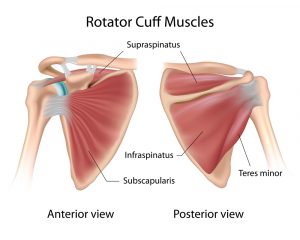[fusion_builder_container hundred_percent=”no” equal_height_columns=”no” menu_anchor=”” hide_on_mobile=”small-visibility,medium-visibility,large-visibility” class=”” id=”” background_color=”” background_image=”” background_position=”center center” background_repeat=”no-repeat” fade=”no” background_parallax=”none” parallax_speed=”0.3″ video_mp4=”” video_webm=”” video_ogv=”” video_url=”” video_aspect_ratio=”16:9″ video_loop=”yes” video_mute=”yes” overlay_color=”” video_preview_image=”” border_size=”” border_color=”” border_style=”solid” padding_top=”” padding_bottom=”” padding_left=”” padding_right=””][fusion_builder_row][fusion_builder_column type=”2_3″ layout=”1_1″ background_position=”left top” background_color=”” border_size=”” border_color=”” border_style=”solid” border_position=”all” spacing=”yes” background_image=”” background_repeat=”no-repeat” padding_top=”” padding_right=”” padding_bottom=”” padding_left=”” margin_top=”0px” margin_bottom=”0px” class=”” id=”” animation_type=”” animation_speed=”0.3″ animation_direction=”left” hide_on_mobile=”small-visibility,medium-visibility,large-visibility” center_content=”no” last=”no” min_height=”” hover_type=”none” link=””][fusion_title hide_on_mobile=”small-visibility,medium-visibility,large-visibility” class=”” id=”” content_align=”left” size=”1″ font_size=”” line_height=”” letter_spacing=”” margin_top=”” margin_bottom=”” margin_top_mobile=”” margin_bottom_mobile=”” text_color=”” style_type=”default” sep_color=””]
May 2019 Newsletter
[/fusion_title][fusion_separator style_type=”default” hide_on_mobile=”small-visibility,medium-visibility,large-visibility” class=”” id=”” sep_color=”” top_margin=”” bottom_margin=”” border_size=”” icon=”” icon_circle=”” icon_circle_color=”” width=”” alignment=”center” /][fusion_text columns=”” column_min_width=”” column_spacing=”” rule_style=”default” rule_size=”” rule_color=”” hide_on_mobile=”small-visibility,medium-visibility,large-visibility” class=”” id=””]
Top Stories In This Newsletter
Chronic Lumbar Disc Problems Can Heal – And Here’s Your Proof
Meet our April Client of the Month Jit
Catch up with Jeremy, Lauren and Antonio, Tina and Sam
[/fusion_text][fusion_text columns=”” column_min_width=”” column_spacing=”” rule_style=”default” rule_size=”” rule_color=”” hide_on_mobile=”small-visibility,medium-visibility,large-visibility” class=”” id=””]Please click here to find a PDF version of our April Newsletter[/fusion_text][fusion_text columns=”” column_min_width=”” column_spacing=”” rule_style=”default” rule_size=”” rule_color=”” hide_on_mobile=”small-visibility,medium-visibility,large-visibility” class=”” id=””]
Chronic Lumbar Disc Problems Can Heal – And Here’s Your Proof
Lumbar disc herniation is a widespread problem. It often affects people in the 25 to 50 age group and, while it may result from lifting something heavy or twisting the back, equally it can start without apparent reason. Either way, it is one of those back problems that can cause pain in the legs as
well as the back. But, despite the worst fears of people suffering from ongoing lumbar disc problems, there is light at the end of the tunnel.
Lumbar disc herniation
Nanobacteria are cell-walled microorganisms about a tenth the size of the smallest normal bacteria: around 0.05–0.5 mm in diameter. They are the smallest The lumbar discs act as the body’s ‘shock absorbers’. They play a vital role in overall body support and the health of the lower back. A herniated disc bulges from its normal position along the spine (usually due to wear and tear) and may start to impinge on a nerve. While the condition is painful and needs to be managed, the problems often correct themselves after about six weeks. However, some people with ongoing lumbar disc pain (beyond six weeks or so) assume that they’ll either have to have surgery or live with their pain. There is the perception perpetuated by the medical community that their problem will never fully heal without surgery. That’s probably why lumbar herniated discs are the most common reason for spine surgery in adults during their working years.
Surgery: NOT the only option!
A recent piece from The New England Journal of Medicine discussed the case of a 29-year old woman with a lumbar disk herniation that resulted in “substantial spinal stenosis and nerve-root compression”, causing leg pain. She had started to get back pain after playing volleyball several years before; and the pain in her leg had started six months earlier, for no apparent reason. Rather than opting for surgery, she chose conservative treatment. This included physical therapy and an epidural injection of glucocorticoids.
Five months later, the lady underwent an MRI that showed resolution of the herniation:
“Her clinical symptoms resolved, and she was discharged from the clinic, with follow-up recommended as needed.”
Clinical trials suggest that patients with herniated lumbar disks have similar long-term outcomes whether they undergo surgery or choose to follow conservative management of their condition; and the latter involves considerably less risk of the problem worsening. This should be a beacon of hope to anyone suffering from long-term lumbar disc pain that hasn’t corrected itself within six weeks. Physical therapy in conjunction with painkillers may be a favourable alternative to surgery – without the inconvenience or associated risks.
References:
Lindsey R. Baden, M.D., Resolution of Lumbar Disk Herniation without Surgery. The New England Journal of Medicine1564 n engl j med 374;16 nejm.org (2016) Schroeder GD, Guyre C, Vaccaro A. The epidemiology and pathophysiology of lumbar disc herniations. Seminars in Spine Surgery. Volume 28, Issue 1, March 2016, Pages 2-7. Lumbar Disc Herniation. doi:10.1053/j.semss.2015.08.003.
[/fusion_text][/fusion_builder_column][fusion_builder_column type=”1_3″ layout=”1_3″ spacing=”” center_content=”no” link=”” target=”_self” min_height=”” hide_on_mobile=”small-visibility,medium-visibility,large-visibility” class=”” id=”” background_color=”” background_image=”” background_image_id=”” background_position=”left top” background_repeat=”no-repeat” hover_type=”none” border_size=”0″ border_color=”” border_style=”solid” border_position=”all” border_radius=”” box_shadow=”no” dimension_box_shadow=”” box_shadow_blur=”0″ box_shadow_spread=”0″ box_shadow_color=”” box_shadow_style=”” padding_top=”” padding_right=”” padding_bottom=”” padding_left=”” margin_top=”” margin_bottom=”” animation_type=”” animation_direction=”left” animation_speed=”0.3″ animation_offset=”” last=”no”][fusion_blog layout=”large” blog_grid_columns=”” blog_grid_column_spacing=”” blog_masonry_grid_ratio=”” blog_masonry_width_double=”” equal_heights=”no” number_posts=”6″ offset=”0″ pull_by=”category” cat_slug=”” exclude_cats=”” tag_slug=”” exclude_tags=”” orderby=”date” order=”DESC” thumbnail=”yes” title=”yes” title_link=”yes” content_alignment=”” excerpt=”” excerpt_length=”10″ strip_html=”yes” meta_all=”yes” meta_author=”yes” meta_categories=”yes” meta_comments=”yes” meta_date=”yes” meta_link=”yes” meta_tags=”yes” scrolling=”pagination” grid_box_color=”” grid_element_color=”” grid_separator_style_type=”” grid_separator_color=”” padding_top=”” padding_right=”” padding_bottom=”” padding_left=”” hide_on_mobile=”small-visibility,medium-visibility,large-visibility” class=”” id=”” /][/fusion_builder_column][/fusion_builder_row][/fusion_builder_container]

